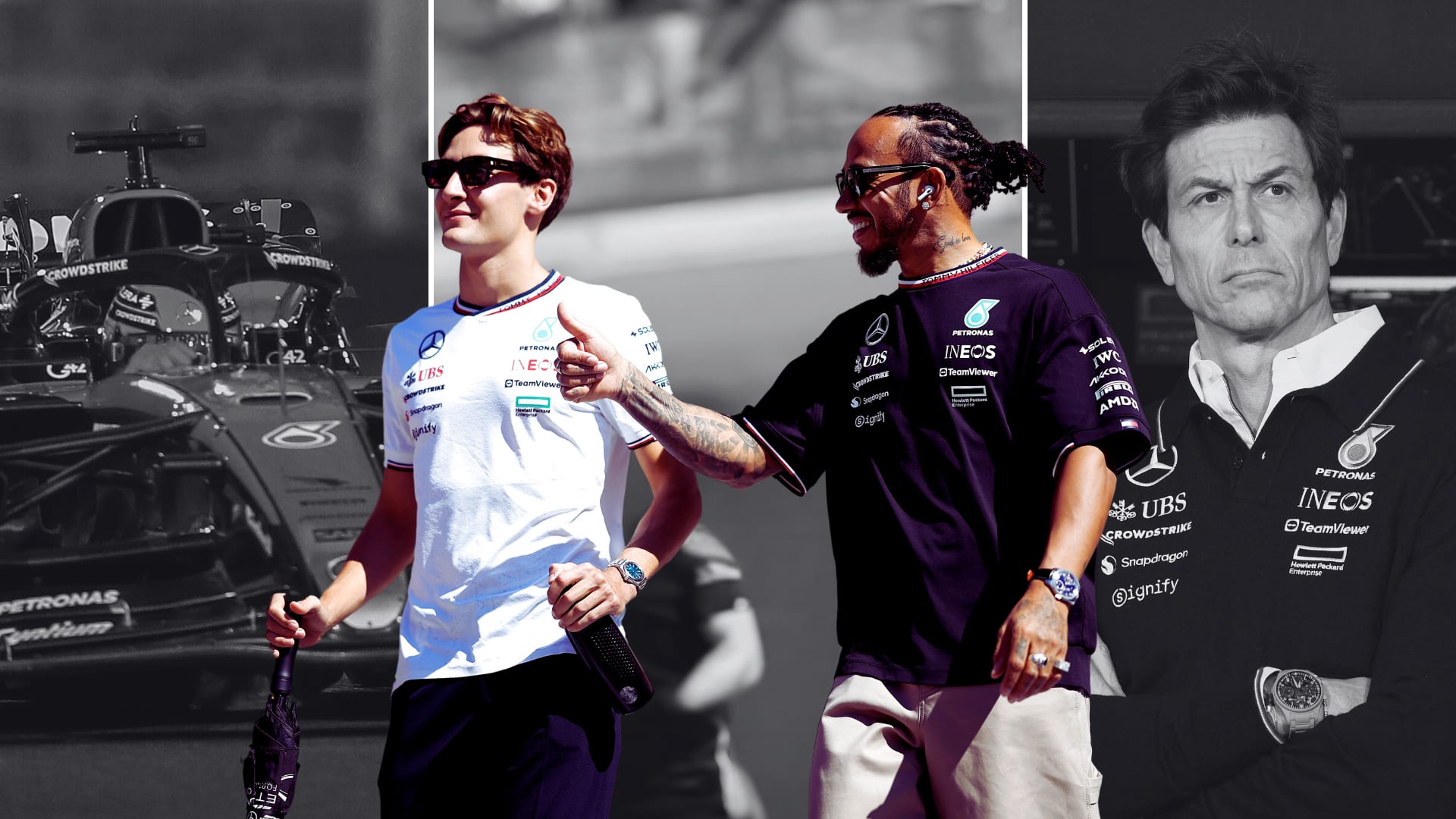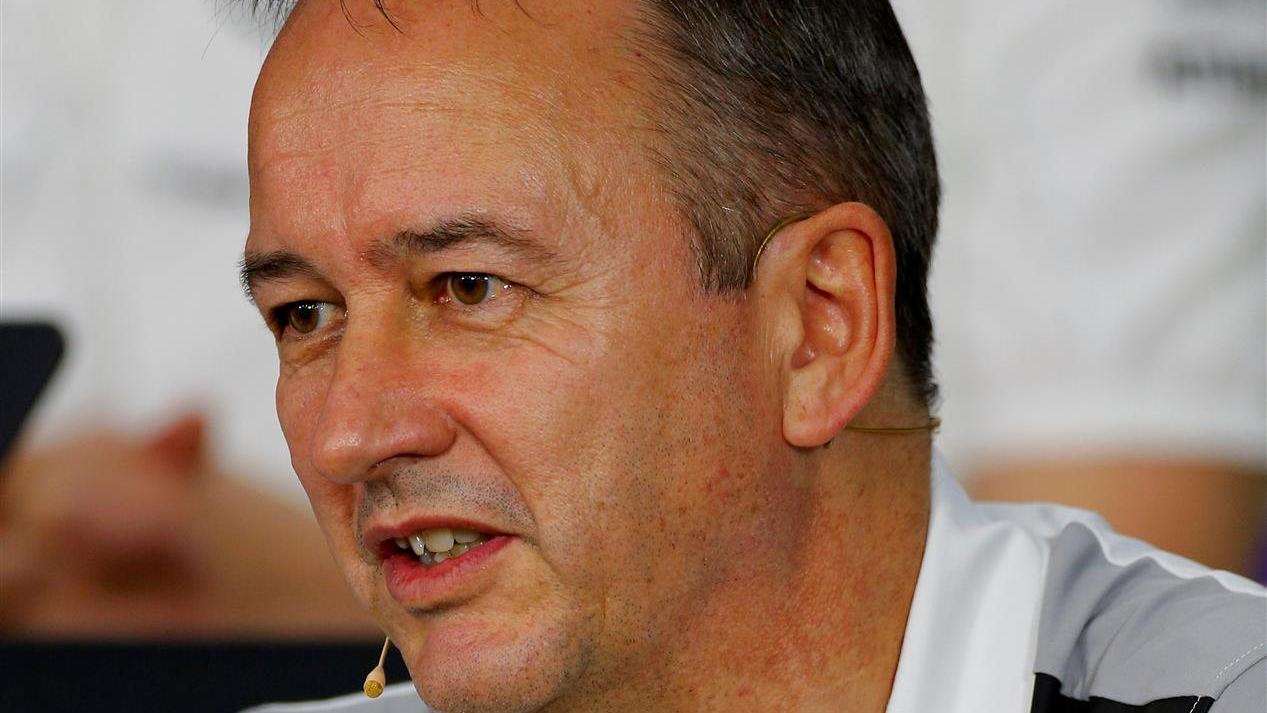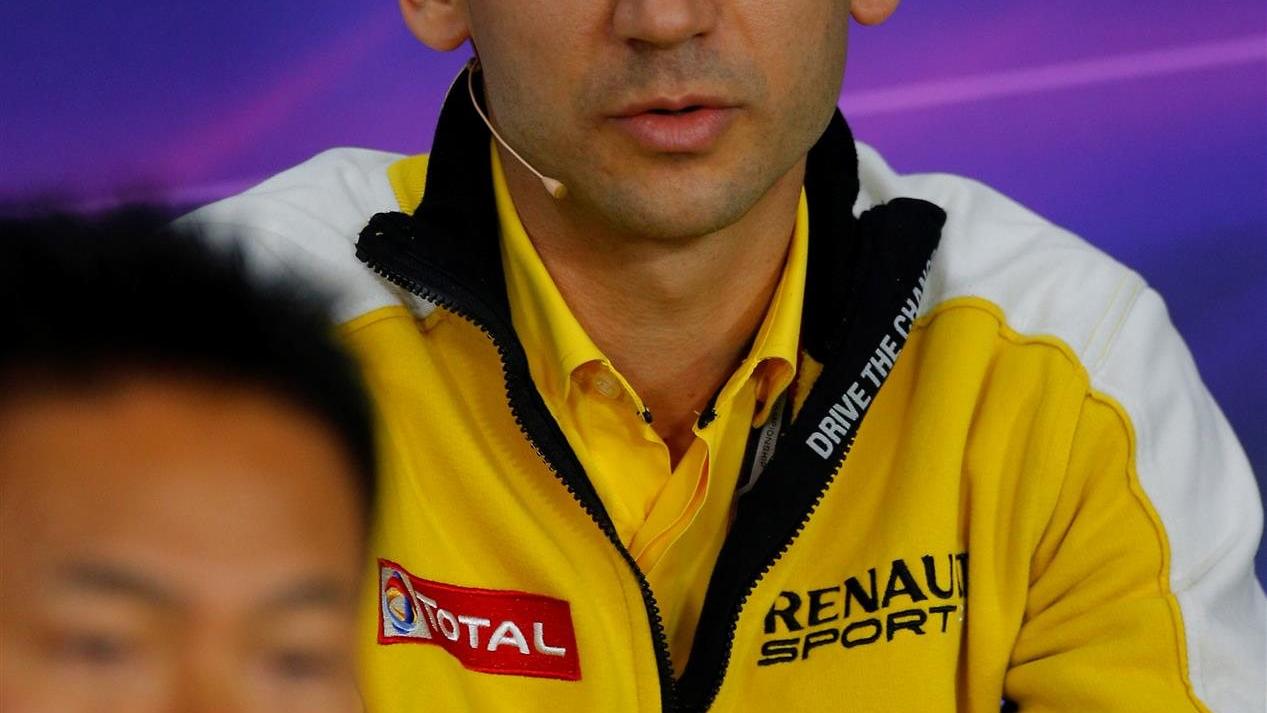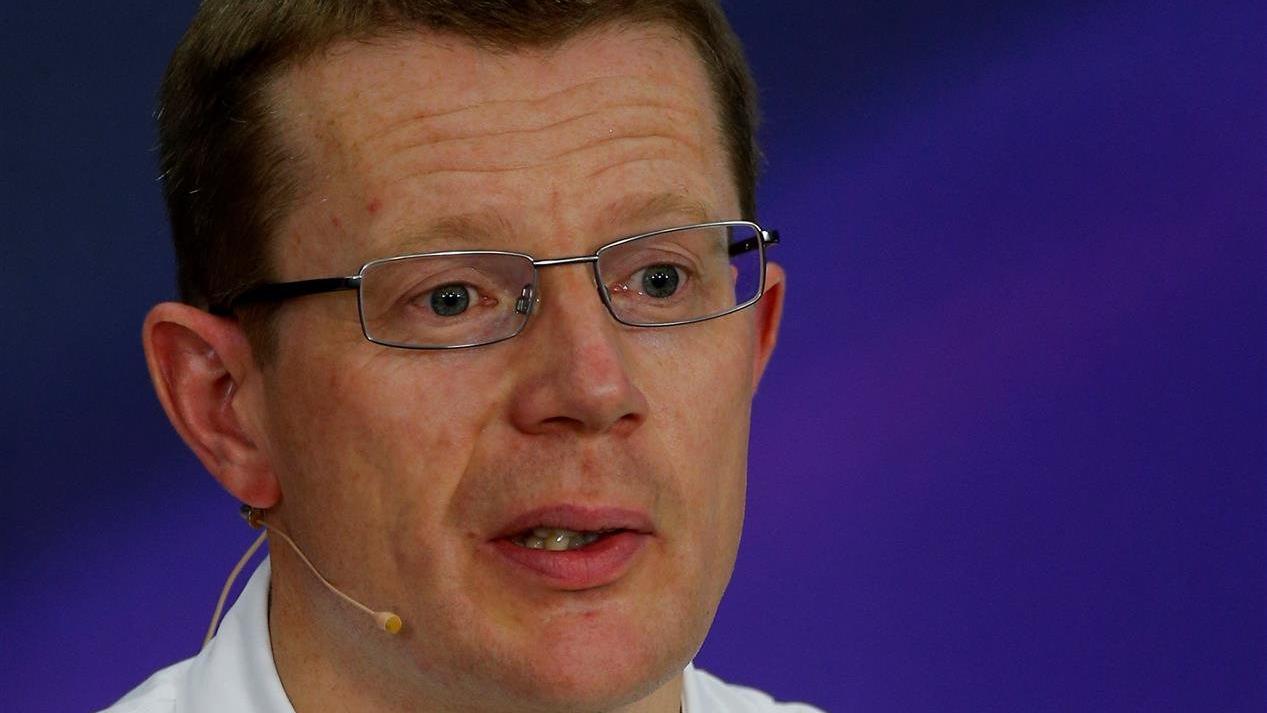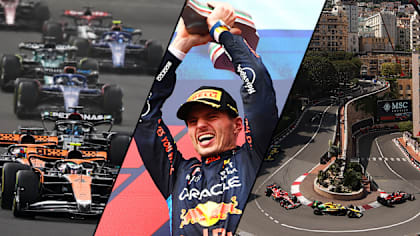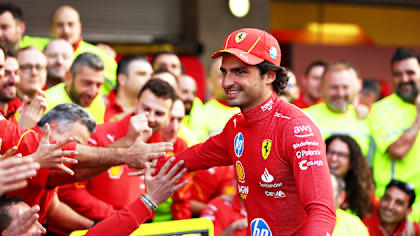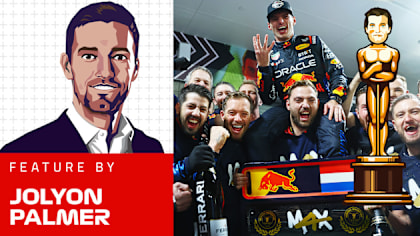1 / 4
News
FIA Friday press conference - Japan
Team representatives - Pat Fry (Ferrari), Andy Cowell (Mercedes), Remi Taffin (Renault), Paul Monaghan (Red Bull Racing), Yasuhisa Arai (Honda), Jonathan Neale (McLaren)
Q: Arai-san, if I can start with you please. What’s the current state of the Honda project? Is Honda on target with development?
Yasuhisa Arai: First of all, thank you very much to sit in centre. I am glad to be here again after Shanghai. Our progress is right now almost on schedule and I hope that in the year 2015, March we will make [a good start] together with our partner, get a good start on the grid.
Q: Would you like to run the power unit in a McLaren before the end of the year? Is that feasible? Are you allowed to do that?
YA: Everyone asks this to me! McLaren and Honda work together to design and create an experimental test vehicle to check the power unit system but unfortunately we don’t have an actual test plan but I hope if possible we will drive just before next season.
Q: You can’t say any more than “just before next season”?
YA: Just before next season. End of the season and next season, during that time. That’s my hope.
Q: What lessons have you learned from the efforts from the other power unit manufacturers? Are there particular areas that you’ve noticed they’ve had troubled with?
YA: I’ve learned very small things because most of the data we don’t know. So, very difficult to learn on the track.
Q: You’ve seen the failures that they have had. Are there particular areas you have concentrated on?
Jonathan Neale: If I may, just to help my partner here, as Arai-san says it’s very difficult at arm’s length to focus on any particular area. Honda and McLaren have a lot of work to do together in a short period of time and I’m sure if you were to ask - I don’t want to put words in the mouth of either Andy or Remi here - but if you were to ask them what it felt like for them at this time of year before they were starting with the V6 engines, they’ll know what we’re going through at the moment.
Q: Thank you for that. If I can come to the back row now: a couple of questions for all of you. First of all, what is your state of development at this stage for 2015 with your engines? Remi, if I can start with you?
Remi Taffin: It’s all about on plan. It’s basically now a few months we are working on that and we now have got a few examples on the dyno, so it’s a work in process. I think we are going in the right direction. It’s always difficult to know if we’ll hit all our targets but that’s where we are at the minute.
Q: Andy?
Andy Cowell: We’ve been doing lots of development ever since we froze the specification of this year’s engine in February, so we’ve been doing lots of development on research engines and using this year’s engine as a prove-out but our final specification of engine won’t be complete until the early part of next year, because for all of us we’re in the development phase until the.
Q: Thank you. And Pat?
Pat Fry: Our development is very similar to Andy’s really. As soon as the engine was frozen we’ve obviously been developing as hard as we can and trying to improve the power unit in all areas. There is a huge amount for us still to do. Very little of next year’s spec engine actually exists, which I expect to be the same for everyone here. It will all finally be coming together at the start of January.
Q: Can I ask you your feelings about unfreezing in-season power unit development and where is that discussion actually going? Remi?
RT: Where is that discussion? I think at the moment it is at the upper level than the one we are here and what I think about it, or what Renault thinks, is that it is not going to really change the way we are working. As Andy says we are developing our engine for next. There won’t be many parts that will be looking like the one from this year. Whether we will be able to put all the parts, all the development into one engine for Melbourne is difficult to say. Of course we will push as much as we can, because the more we put for the first race, the more performance we will get for the whole season. If we’ve got a slot at some point in the season to introduce some more development, they will be on the shelf, because obviously we just keep on working all through the year. It’s not really decisive in how we achieve our development. We will just take the opportunity if it is there.
Q: What are your feelings about this Andy?
AC: I think it would be a change to the way we are structured. We froze the performance specification of this engine in January/February of this year and started working on a 12-month development programme and if you’ve got one introduction point or two introduction points, it is a change. And often it is the prove-out - taking that performance specification into something that is reliable enough to do five race weekends - that’s the costly aspect, because you’ve got to have several sets of bits and often you have to go back around, because fatigue failures occur and you’ve got to redesign and go again. The regulations were put together several years ago with the opportunity to do an annual performance update. If we change to a mid-season as well as a start-of-season update, we all just need to consider that carefully. I think we all acknowledge that it would affect the financial situation. Perhaps the engineering directors would love the opportunity but the finance directors would have a furrowed brow at the thought of doing it. It needs to be discussed and considered carefully.
Q: Pat, what does Ferrari think of this?
PF: I think we are continually developing all through the year. It’s not like we’re targeting a fixed point, we’re developing as quickly as we can in every single area - some parts of that will be ready in January and some might not. But even then we don’t stop, we’ll carry on developing all through the following year. I think the changes that are being discussed still stay within the technical regulations and the number of tokens that you are allowed - it’s exactly the same number - it just gives you the opportunity to upgrade in one extra point, mid-season. I think for us the cost implications are not huge. As I said we would be doing all that development work anyway and also trying to improve the reliability of bits, so it doesn’t make a huge difference for us from that point of view.
Q: Jonathan, we’ve heard the state of the engine development for next year. What’s the state of the chassis development?
JN: Well, as Arai-san has said, we’ve been developing an experimental vehicle to support the engine and transmission integration. We continue to develop the car on the circuit this year, aerodynamically. And while we are not comfortable with where we’re at, we’re much more confident about the direction in which we’re taking the team and the progress that we’re seeing on the track. The gap to Mercedes still looks pretty eye-watering at times, so we’ve got a lot of work to do. The changes that Eric and I have made to the organisation, I’m happy that that’s going in the right direction. We’ve just got to get out heads down now and get on with it now. It’s going the right way.
Q: We’d remember in the past McLaren and Honda would be pounding around here for weeks on end… not possible these days.
JN: Well the world has changed a bit since that time, not least of which the engine regulations, chassis regulations, aerodynamic restrictions - it’s an energy-constrained series. All of these things, I think, have been good for the sport. They have their challenges, the rate of development, or the rate of aerodynamic development has definitely been restricted by the amount of wind tunnel time that’s available - not so sure that that’s actually restricted the amount of aerodynamic cost because the reality is that a unit of time in capacity is worth so much more at the moment but that’s probably a wider discussion - but we are very optimistic that the steps we’re taking in the organisation are the right ones and we will be a competitive team.
Q: And finally - and I’m sure you’re expecting this one - when are going to hear about the drivers? What are the criteria for choosing the drivers for next year?
JN: That’s a really interesting question and I think it depends on who you ask. I’ll give you my view. We have two very good drivers in the car who have been working incredibly hard this year, not always with the easiest car but with an improving car nonetheless. Having a world champion in the team is fantastic from a development and a confidence part of view, and having the Viking charger is also a joy to work with and good for us. In terms of setting our stall out for the future, then in our longer range, longer term conversations both with the shareholders and with our colleagues in Honda, then we have an eye on what’s happening in two, three, four, five years’ time. Where does the team want to be? In the short term, I read the same magazines that you do. I look with interest and note that everybody’s in contracts - but this is Formula One and anything can happen at a moment’s notice. I’m never surprised by what Formula One will throw up.
Q: Paul, Sebastian in particular is on five units of certain parts of the engine. Is there any way you can manage that? Is there any way of managing how you take those penalties if there’s going to be a penalty? He says there’s going to be a penalty. How do you manage that?
Paul Monaghan: As carefully as you can, with the minimum damage to the team’s performance. Obviously we have a few people breathing down our necks for second place in the Constructors’ title, so we have to keep ourselves in a competitive situation. I think on a race-by-race basis we review where we are, what we’ve got, how far we think we can take it? When is it least damaging to take any penalty? And we’ll have to make that call in the near future.
Q: Unless it springs up on you beforehand…
PM: We’ll deal with it if it does.
Q: You are entering into a much closer relationship with your engine manufacturer Renault. How is that coming along, what are the benefits of that?
PM: I think we’ve always had a close relationship with Renault. Don’t forget we’ve got four Drivers’ and Constructors’ titles with them. I think a closer collaboration will only benefit both parties. So if we can bring some additional skill-sets to the party to complement those which Renault possess, we’ll get a better package out of it, not just the power unit but its integration into the car, and ultimately our performance. That’s our aim, and that’s what we’ll do.
Q: How far advanced is that?
PM: It’s taking shape at the moment and I think a few early projects are starting to bear fruit looking towards next year. We hope to pick up a few more and, as Remi said, when all the pieces come together, then we’ll see how big a step we can make with it all.
QUESTIONS FROM THE FLOOR
Q: (Paolo Ianieri - La Gazzetta dello Sport) Arai-san, there are rumours today saying that Alonso has signed with McLaren-Honda. Can you confirm this, and if not, how desperate or hungry is Honda to have Alonso in its car next year?
YA: [to JN] Should I answer? McLaren-Honda know this idea, what driver should be used to drive our car. There is many rumours but my understanding that Formula One driver is just 22 drivers in the world. All of the drivers, I have great respect and so of course not only McLaren-Honda but also the other teams want to keep the good driver. Not only McLaren-Honda but also the team, everyone keeps the good driver. We don’t decide yet.
Q: (Kaz Kawai - Fuji Television) Pat, we’ve all heard that Steve Clark has won his job back. Do you have any idea when he’s coming back or have you been told by your boss when he’s coming back in?
PF: I think that’s all being negotiated and sorted out at the moment, so I’m sure we’ll know in a few days.
Q: (Kate Walker - crash.net) Pat, we’ve heard some stories today about the movement of technical staff from Red Bull, possibly moving to your team. Does this mean that Seb has signed for Ferrari as has been rumoured?
PF: Technical team... we have had a few people join in the recent months but in terms of drivers, it’s got no link to drivers whatsoever.
Q: (Sumie Dan - The Hochi Shimbun) Question for Arai-san: I understand that your new engine power target is over 600hp. Did you achieve this target now?
YA: Sorry, I never said the number of our target. Where did you get such kind of a number? But of course our target is very clear. This season, the Mercedes is top of top so next season we shall achieve that same competition or power. Everyone understands that and wants to exceed that power. Lots of work.
Q: (Dieter Rencken - Racing Lines) To Andy, Remy and Arai-san if he would like to comment as well: obviously any change to the engine freeze situation requires regulation change. Given Formula One’s present governance process, that means that the teams would actually be voting for that rather than the engine suppliers. How much of a frustration is it that your destiny is not ultimately in your own hands?
RT: Difficult to answer or difficult question, I don’t know, but I will give one. That’s the way it is, as you say, that’s the regulations so obviously we have to follow that, and again, as I said a bit earlier, it’s not going to be changing the way we are working so whether we are going to have a change or not, we’re just pushing like elves to try to get back to where we should be, so at the upper level and whatever we will get for next year... it will just be a plus, I would say, if we have this change. I would not say we are frustrated.
AC: Yeah, I would support Remy’s comments. It’s not frustrating, that’s how Formula One is set up and one of the great things about Formula One is that the boundary conditions do change and you do well if you can adapt quickly, if you can react quickly, change your organisation, not slow down but accelerate and make sure that you’re in a strong place. And that’s what we’ll do. So as soon as we’ve got any change to the regulations, we’ll all react, we’ll all take the race on and we’ll all see who’s done the best job when we get to the first race.
Q: (Dieter Rencken - Racing Lines) Andy, I must come back to your comment earlier on that it’s got to be very carefully managed, any changes, and yet you won’t have any input into that process and that’s really what I’m getting at. How would you ensure that it is carefully managed?
AC: You’re asked your opinion, so collectively we’ve got lots of years’ experience developing engines, KERS systems, ERS systems and we’ve all got a clear breakdown as to how many people we’ve got, how much we spend on material, how loaded our dynos are so based on a different set of criteria, different set of regulations, we can all work out what the consequences are, what the opportunities are and do we want to take on those opportunities or not. So of course we’re all consulted on that and regulations are often a compromise, not everybody is completely happy but as soon as the regulations are clear and fixed, you react, you respond quickly, motivate the staff and you go racing into the first race with those regulations as we’ve seen at the start of this year.
YA: Just a small comment: from the engineers and many fans, they and we want to keep the competition so in a season, to develop the many parts and to keep the competition is very important, just from engineering and fans’ side.
Q: (Kate Walker - crash.net) Arai-san, when you first announced your engine development programme, you said that there would be the possibility of supplying more than one customer team from 2016 onwards. Have you already entered into any negotiations or discussions with potential customers?
YA: Not yet, because no one knows of our potential. Of course, we prepare many cards but no one has checked my card.
Q: (Paolo Ianieri - La Gazzetta dello Sport) Mr Arai, what is your target for next year, realistically. What level do you think your power unit will be able to perform at and do you think that you have been doing enough at this stage, to convince a top driver to join your team?
YA: Our development progress is still on plan but we need to be careful to achieve top competition power within five months, so I need more time but finally our target, the McLaren-Honda target will be to keep a good position to compete in the championship. That’s our target.
Q: (Ken Kawakita - Weekly Playboy Magazine) Arai-san, we’ve seen at the debut this year, a lot of engine manufacturers facing problems in testing as this whole system is so complicated and integration of the whole components is a colossal issue. And as far as we’ve heard, you start properly testing from next year with only one partner. That means that the information and data that you can gather from that is quite limited. Do you think this could be a disadvantage for your engine programme? Do you have any concerns about this situation?
YA: I don’t think so. Our partner is very strong and I think one of the best teams. Of course that means just one team’s data, but maybe that’s enough, I think. So we already discussed with our partner and set a target and already we have agreed whether the target is good or not. Then finally, maybe in March 2015 we will be in a good position.
Q: (Dieter Rencken - Racing Lines) Paul, obviously Adrian has started moving out and moving on within the group. What will the restructure look like? Who will be appointed in what positions, come next year?
PM: As I understand, a group of four will step into the void created by Adrian’s step-back. That’s Rob Marshall, Dan Fallows, Pierre Wache and myself. So we all get a dose more responsibility. Adrian hasn’t left, he will still be involved in the F1 programme and that’s how it will be divided up.
YOU MIGHT ALSO LIKE

Video SECRET SANTA: Watch to see what the F1 drivers gave each other for Christmas
Feature Everything you need to know about F1 – Drivers, teams, cars, circuits and more
News Sainz recalls his favourite memories with Ferrari and the one moment he will never forget
Feature THE PALMERS: Jolyon Palmer picks his stand-out performers, best race and biggest surprise from the 2024 season
